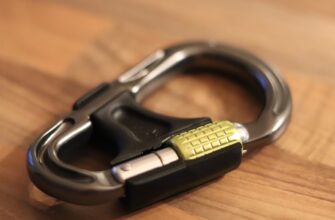Why Your Cold Storage Isn’t Secure Without Encryption
Cold storage—keeping crypto offline in hardware wallets or paper backups—is the gold standard for security. But here’s the brutal truth: unencrypted cold storage is like locking your gold in a glass vault. Physical theft, accidental exposure, or unauthorized access can still drain your assets. Encryption transforms your cold storage from vulnerable to virtually impenetrable, and crucially, it doesn’t require a fortune to implement. This guide reveals budget-friendly strategies to encrypt your accounts without compromising safety.
Low-Cost Encryption: Affordable Security Essentials
Encryption scrambles your private keys or seed phrases into unreadable code, decipherable only with a password. Forget expensive enterprise solutions—effective encryption for personal cold storage can cost little to nothing. Here’s why it’s accessible:
- Open-Source Tools: Free, audited software like VeraCrypt or AES Crypt offer military-grade encryption.
- Built-in Wallet Features: Many hardware wallets (e.g., Ledger, Trezor) include free encryption for backup files.
- DIY Physical Security: Combine encryption with low-cost tamper-proof storage (e.g., encrypted USB drives + fireproof safes).
Step-by-Step: Encrypting Your Cold Storage Account (Under $20)
Follow this cost-efficient process to fortify your assets:
- Backup Your Keys: Write down your seed phrase on paper or metal plates.
- Encrypt Digitally: Use VeraCrypt (free) to create an encrypted container on a USB drive. Store digital backups here.
- Password-Protect Physically: Place paper backups in a sealed envelope with a tamper-evident sticker. Store in a locked box.
- Multi-Location Storage: Split encrypted backups across 2-3 secure sites (e.g., home safe, trusted relative’s house).
- Verify & Update: Test decryption quarterly. Rotate passwords annually.
Top 5 Budget Tools for Cold Storage Encryption
- VeraCrypt (Free): Creates hidden encrypted volumes for digital files. Ideal for USB drives.
- Cryptosteel Capsule ($25-50): Stainless steel seed phrase storage with optional encryption via passphrase.
- 7-Zip (Free): Compress and AES-256 encrypt wallet files before cloud backup.
- Password Managers (e.g., Bitwarden, Free Tier): Securely store encrypted wallet passwords.
- Tamper-Evident Bags ($10/20-pack): Physically protect paper backups with visible intrusion alerts.
Maintaining Security: Long-Term Low-Cost Practices
Encryption isn’t “set and forget.” Sustain protection with these habits:
- Password Hygiene: Use 12+ character phrases (e.g., “BlueDragon$42*Forest”), never reuse passwords.
- Offline Updates: Only decrypt/update backups on air-gapped devices to prevent malware exposure.
- Redundancy Rules: Keep 3 encrypted copies in geographically separate locations.
- Legacy Planning: Share decryption instructions with a trusted person via sealed letter.
FAQ: Low-Cost Cold Storage Encryption
Q: Can I encrypt my Ledger/Trezor backup for free?
A: Absolutely. Use the wallet’s native encryption for digital backups or VeraCrypt for added layers—both cost nothing.
Q: Is encrypted paper backup safer than a hardware wallet?
A: Combined, they’re strongest. Encrypt paper backups as a failsafe if your hardware wallet is lost or damaged.
Q: What’s the biggest encryption mistake for cheap setups?
A: Weak passwords. A $20 tool with “password123” is worthless. Prioritize complexity over cost.
Q: How often should I check encrypted backups?
A: Every 3-6 months. Verify files decrypt correctly and update passwords if any breach is suspected.
Q: Can encryption protect against physical theft?
A: Yes! Without your password, stolen encrypted drives or paper backups are useless data blobs to thieves.








